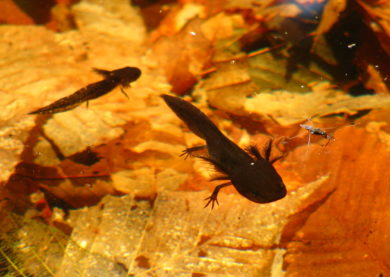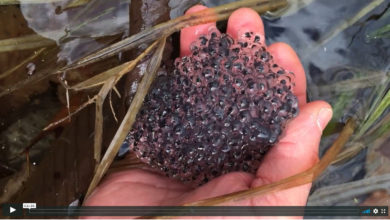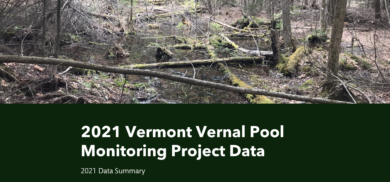Each spring, as wood frogs and salamanders across Vermont make their way to vernal pools, so too do passionate Vernal Pool Monitors. By adopting a local vernal pool and collecting data there a few times each year, VPMon citizen scientists are establishing a baseline of essential data on the health of these unique ecosystems.
Though vernal pools are both key breeding habitat for charismatic species and hidden powerhouses in the forest ecosystem, they face an uncertain future here in Vermont. You can help us confront this uncertainty by becoming a Vernal Pool Monitor!

Project Goals and Objectives
The project’s overall goals are to:
- Build a base of knowledge regarding the state of vernal pools in Vermont
- Raise awareness about the value of vernal pools by involving the public in vernal pool monitoring
- Advance vernal pool conservation planning at the state and local levels
With help from our extraordinary citizen scientists, we made tremendous progress toward those goals in 2019. Our inaugural 2018 tally of six monitored vernal pools grew to 49, and our VPMon volunteer “army” grew from a handful in 2018 to 125 in 2019! And there’s a lot more to report.

Vernal Pool Conservation Video Series
Watch a vernal pool come to life in this video series. Each short (2-3 minute) video reveals a different aspect of the natural history and ecology of these fascinating, keystone ecosystems. Watch the videos »

VPMon 2021 Post-Season Report
VPMon Coordinator Kevin Tolan presents the 2021 VPMon end-of-season report that summarizes several year's worth of audio and egg mass data. View Story Map »
Why Vernal Pools? Why now?
Vernal pools provide critical habitat for a diverse assemblage of wildlife, from breeding wood frogs and spotted salamanders, to fingernail clams and fairy shrimp. Despite their important role, vernal pools remain poorly understood and face an uncertain future due to the effects of climate change, airborne pollutants, and development.
Having mapped the location of nearly 5,000 potential and known vernal pools across Vermont with the help of Arrowwood Environmental and many enthusiastic volunteers, Vermont Center for Ecostudies has initiated the next step: an ongoing monitoring project that will help track the health of these critical ecosystems. While volunteers will still work to verify potential vernal pools as part of the mapping project, repeated monitoring of known pools is essential to establish a baseline of data with which to compare future changes, and to increase our body of knowledge about these unique wetlands.
This is where you come in; the success of this project depends on committed volunteers who will visit “adopted” pools a few times each year to assess biological and physical metrics. If you are interested in getting involved, please contact our Vernal Pool Monitoring Program Coordinator.
